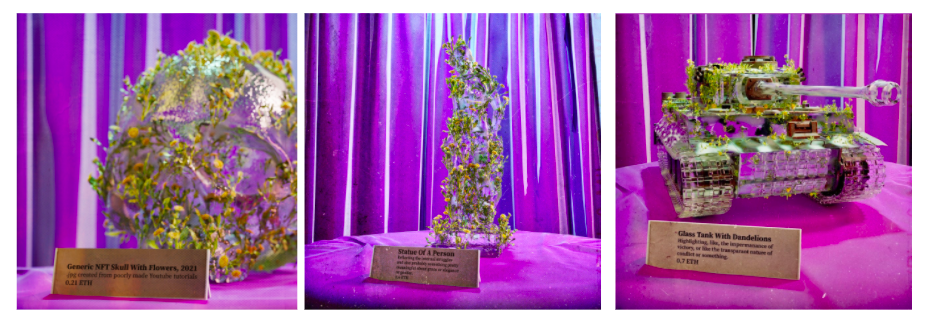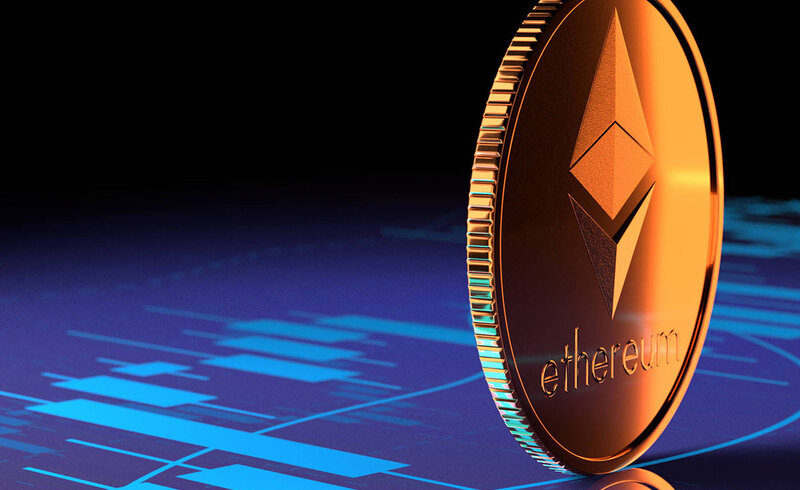From art to business, the blockchain has enabled digital content to hold new value, with implications for the entire AR & VR community.
Today, anyone can build a following online and begin selling their digital assets through third-party marketplaces like OpenSea, Rarible, Mintable, Superare, and other platforms that have become popular with digital creatives.
Suddenly, digital content that used to be “worthless” can now be tracked, traded, sold, and swapped. There’s been a lot of hype around big names and big sales in AR and VR, like the 3D Mars House NFT by Krista Kim that sold for $512,000… but NFTs are a symbol of something greater than “art file sold for X amount of money.”
It’s the beginning of a movement that will change the way our digital society operates.
I caught up with AR and VR industry folks from the UK, Europe, South Africa, to learn more about their views on the growing NFT scene and its potential impact. In the following section, we’ll break down a collection of excerpts from various stakeholders I’ve interviewed over the last few weeks.
EXCERPTS FROM AR & VR STAKEHOLDERS ON NFTS
Dale Deacon | Developing Immersive Storytelling in VR & AR | South Africa
“NFTs are a cool way of digitizing different types of digital artwork. It spans a huge range of artwork and media. What’s interesting is that it hasn’t really caught on in VR worlds, as they can be commoditized in the same way.”
“World-builders in VR are looking at ways to make world building a lot more profitable, but there are few companies that are willing to put down money for a virtual world. Especially here in South Africa.”
“Monetizing the job of being a VR world builder, will be a part of monetizing the role of a world builder. Why I’m interested in AR and VR spaces as NFTs, is that they have a practical value, but the hype around NFTs makes it a bit myopic. There are definitely other ways to monetize VR.”
“The shiny thing that NFTs are at the moment, is not the end goal of this whole decentralized finance – where standard banks have proper competition for once. There might be more traditional finance companies like VISA that guide everyone through the financial shift.”
Adam Lieber | Creative Director, XR/VR Explorer, Music & Sound Experiential Consultant | United Kingdom
“Hopefully, some of the other platforms that aren’t on ETH and are beginning with a more community-based and user-focused approach will show more promise.”
“Artists need to be very cautious… Clearly a huge amount of hype being driven from the top down to raise more liquidity.”
Roman Rappak | Music Artist | France
“I can only imagine what the ‘number of paintings painted in the world vs the number of paintings sold’ would look like, or ‘number of kids at art school vs the number of people who are actually Banksy.’ Art has bad odds if you are trying to sell it— and the non-crypto art world was an elitist mafia way before Beeple ever made a picture of a giant Micky Mouse giving birth to a Tesla.”
“We hear a lot about the “NFTs are a scam and actually very few artists are making money” argument, but really the odds are just as good (or bad!) as the real art world.”
“As usual, digital infrastructure is built by people who have their own biases and is often modeled on a real-world structure (like the art industry). This means it’s elitist, lacking in diversity, unfair and inefficient. However, it’s a system that no one has found a way to disrupt or “make more fair” because art is all about an emotional reaction, and that is something that can be easily manipulated through a clever campaign, an engaging story or a well-structured social media presence.”

Steven Tu | VR Game Developer and Illustrator | South Africa
“The obsession with artificially limiting access to art to drive up worth is not what I’m into.”
“Removing the big ecological footprints and pyramid-scheme-esque infrastructure costs to decentralizing scarcity would be a big first step. After that, we can solve the question of what makes artificial scarcity and decentralization make sense for the distribution of art and compensation of artists beyond existing models.”
Omar Ismail | VC Investor at Supernode Global | United Kingdom
“It is a good time to be a content creator. NFTs make digital goods scarce, thereby enabling digital content creators to monetise their work more effectively. Social tokens add another dimension to this. They enable multi-layered fan-to-creator relationships. They offer an opportunity to re-align the interests of creators with their communities. What’s more, they offer true fans an opportunity to benefit financially from their fandom.”
Read more in Omar’s newsletter on Social Tokens and the Creator Economy.
THE GENERAL CONSENSUS
All-in-all, the general consensus is that NFTs are here to stay and will have a profound impact on the AR and VR industry.
Due to high gas fees, promotional campaign costs, market nascency, and consumer uncertainty, however, NFT art sales are still widely unreliable as a sustainable income for AR and VR artists.
As platforms like OpenSea shift from Ethereum to Polygon in the upcoming months, the problem of costly gas fees will ameliorate as the blockchain shifts from the energy and cash-consuming proof-of-work consensus to a greener and cheaper proof-of-stake consensus.
World-builders will continue to have fascinating roles in the making of the metaverse and future economies. While worldbuilding has largely been unmonetized to date, the role and work of VR and AR worldbuilders will become sustainable in the next few years as virtual land parcels in platforms like Decentraland generate real income for virtual land developers and owners.
Worldbuilders, VR and AR users, and the community at large are still warming up to the idea of owning entire worlds and virtual spaces. Platforms where this type of behavior is rampant, such as VRChat, have yet to integrate with the blockchain to enable this type of creator economy, but it’s only a matter of time.
Financial institutions, like fine arts institutions, are also betting on the blockchain to remain relevant in the rapidly evolving digital economy.
There’s a massive shift on the horizon in banking, digital valuations, and opportunities for businesses, consumers, and creatives alike.
On my part, I’ve been paying close attention to the resale value of NFTs, and have instead hedged my bets on the cryptocurrencies that power these platforms. Any risk is your own decision to take, but the opportunities are equally as exciting.
The post NFTs: Perspectives From AR & VR Stakeholders appeared first on VRScout.




